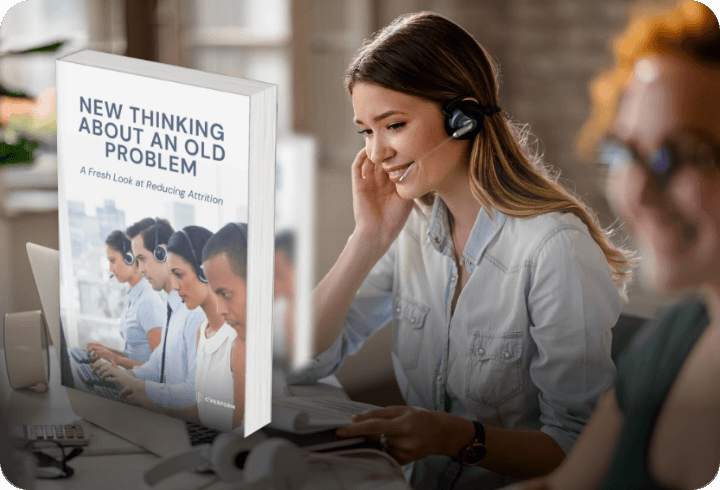- Align QA and Training goals
- Share performance data
- Hold regular feedback sessions
- Use calibration to improve consistency
- Leverage tools like C2Perform for better integration
We had another great experience at this year's QATC annual conference in Nashville in 2024. We met some wonderful people, and we saw a lot of content about the connection between QA and Training.
One theme that came through loud and clear is that integrating training and quality assurance is still a major challenge across many industries. While companies may excel at each discipline separately, bringing them together in a meaningful way, one that drives outcomes, often falls short.
One of the big takeaways? Many companies still struggle with this important connection.
In many companies, QA lives in one department and Learning Management in another. As long as the two groups are in sync, this works. But many times, there's no feedback loop from one side to the other.
Quality Assurance (QA) monitors and evaluates performance standards. Customer Experience (CX) conversations are top of mind in every organization these days. So, QA plays a significant role in shaping a company's brand voice.
When these two functions operate in silos, it leads to missed opportunities, inconsistent messaging, and inefficiencies in onboarding and coaching. Creating intentional links between quality assurance and training helps unify processes and keep everyone aligned with business goals.
Training gives your team the tools needed to deliver on defined operating processes. Put together, quality assurance and training help employees deliver on your company's CX promises. Plus, a solid learning management process empowers your team and builds confidence.
What does Connection between QA and Training look like?
In our work with clients, we see a lot of outstanding performances from QA and Training teams. We also see opportunities to improve the effectiveness of these groups by using a structured feedback loop. If you don't have a "closed loop" approach, you could be missing out on chances to improve.
The most successful companies use shared dashboards and linked scorecards to bridge quality assurance coaching and real-time training reinforcement.
A well-executed loop makes it easier to reinforce positive behaviors and quickly correct the ones that miss the mark, saving time and improving consistency.
Here are some ideas to help you build a great working relationship between QA and Training.
Alignment and Synergy
Success starts with Quality and Training being in sync on priorities and goals. A good quality assurance approach identifies what needs to happen. Effective training uses best practices in content creation and delivery to help employees to succeed.
Alignment is also the foundation for companies that want to scale QA and calibration training efficiently. When your QA scores point to trends, your training strategy should be ready to respond.
Companies that invest in aligning training and quality assurance from day one see faster onboarding times and fewer errors in customer-facing interactions.
This means alignment on the basics:
- Who (and how many) people need training
- When training needs to happen
- Required content and delivery (and resources)
- How and where to train
- How long it will take and budget implications
- Understanding what successful training looks like
- Understanding the cost of non-compliance
- Agreement on a feedback loop
Active Communication Between QA and Training
The most effective organizations we work with make time for QA and Training to meet on a regular basis. A simple but effective agenda for these meetings centers on three questions:
- What's working?
- What's not?
- What does each group need from the other to succeed?
We'd advocate for having these sessions weekly but monthly is a great start.
Real-world conversations based on data
Quality and Training are sources of data that can - and should - inform valuable conversations.
The Quality team can provide great feedback to Learning Management. Examples include:
- List of attributes or processes that are often missed
- Performance that compares various training cohorts (classes)
- Examples of outstanding performance
- Opportunities for refresher training
Likewise, the Learning Management team can provide great intel to QA:
- Identification of processes that need updates or clarification
- Feedback from training participants about those processes
- Course results that help QA focus on specific evaluation opportunities
When quality assurance teams and training managers operate from shared data, they reduce redundancy and reinforce the same goals. This collaborative insight allows teams to close performance gaps faster, especially when coaching is personalized and data-driven.
Calibration
Most companies have some sort of calibration process, but often it's not defined very well. Or, calibrations happen "when we can get around to them." Done right, calibrations offer tremendous value for Quality Assurance and Training teams.
Here are a few calibration best practices we've observed from clients:
- Be intentional about the process. The biggest obstacle to an effective calibration process is often committing to it. That means stakeholders commit to it
- Appoint an owner. Have a single person serve as the facilitator for your calibration sessions. Better yet, rotate responsibility among participants to keep a fresh perspective.
- Encourage independent review of the call/email/chat before the session. This does two things. First, it increases the efficiency of the process. Second, it helps to avoid the "group think" that happens sometime during calibrations.
- Involve all your stakeholders. Calibrations should involve QA, Training, Operations and CX owners. In particular, calibration results should be a standard part of coaching feedback.
- Use data to drive improvements. Whether you track calibrations on a spreadsheet or in a QA tool, use data to inform follow up. More often than not, you'll identify low-hanging fruit that will yield immediate improvement. Plus, you'll be able to establish baselines to guide your future efforts.
- Consistency is key. While calibrations can take time, they get easier when stakeholders commit to it. Sustained, regular effort is critical.
Many clients find success by turning calibration into a multi-team initiative, not just an internal QA task. When you integrate calibration feedback into ongoing QA coaching, results become repeatable.
Strengthen the Connection between QA and Training with C2Perform
Having the right tools can be a huge help in building the connection between QA and Training. Without them, you have to rely on manual processes, which consume time and aren't efficient.
C2Perform brings quality assurance coaching and learning content together under one roof, empowering both QA analysts and trainers to focus on performance improvement.
At C2Perform, we offer a comprehensive, all-in-one performance improvement and employee engagement solution. Our QA tools allow you to automate workflows, so you can say goodbye to spreadsheets. Plus, you can drive developmental activities and recognize your team based on rules you create.
Whether you’re looking to train QA team members, improve calibrations, or align your training and quality assurance strategy, we’re here to help.
Schedule a demo to see how C2Perform helps brands in 25 countries get better every day.
The C2Perform Index
Insightful Analysis on Contact Center and Customer Support Trends
Struggling with Attrition?
Check out our eBook, New Thinking About an Old Problem
Subscribe to the C2Perform Index
Join contact center and customer support professionals around the world who can’t wait to see the C2PI every quarter.
 English
English Español
Español






.png?height=350&name=Untitled%20(300%20x%20175%20px).png)


